变速箱壳体组合机床夹具设计【12张CAD图纸+毕业答辩论文】
收藏
资源目录

压缩包内文档预览:
编号:449916
类型:共享资源
大小:1.61MB
格式:RAR
上传时间:2015-07-06
上传人:好资料QQ****51605
认证信息
个人认证
孙**(实名认证)
江苏
IP属地:江苏
45
积分
- 关 键 词:
-
变速箱
壳体
组合
机床
夹具
设计
全套
cad
图纸
毕业
答辩
论文
- 资源描述:
-
变速箱壳体组合机床的夹具设计
摘 要:变速箱壳体组合机床采用卧式双面加工方案。用于钻削被加工零件左侧面上的8个∅8.5的孔,1个∅11.9的孔,右侧6个∅8.5的孔,2个∅9.8的孔。主要包括总体设计和夹具设计两个部分。左侧主轴箱用来加工这9个孔,右侧主轴箱用来完成剩下的8个孔的加工,两主轴箱的中间是夹具部分。机床采用液压滑台实现刀具的进给,以保证进给速度的稳定可靠。工件选用“一面两孔”的定位方案,能够保证工件的位置精度要求,同时便于工件装夹,又有利于夹具的设计与制造。采用气压夹紧方式。为保证工件上被加工孔的位置精度,采用了导向装置。因工件批量较大,导向装置中的钻套容易磨损,所以采用了可换钻套。夹具体材料采用HT150,并在夹具体上开设排屑槽以防止切屑在定位元件工作表面上或其他装置中堆积而影响工件的正确定位和夹具的正常工作。
关键词:组合机床;总体设计;夹具
The fixture design of modular machine tool for transmission body based on 3D method
Abstract: The modular machine tool for transmission body uses the horizontal-type and two-side processing plan.It is used for drilling these holes in the work piece: eight holes with the diameter 8.5mm and depth 24mm, one hole with the diameter 11.9mm and depth 25mm on the left side,six diameter 8.5m holes and their bottom surfaces on the right surface, two diameter 9.8mm holes.The topic includes two parts, the general design and fixture design of the machine tool. The left spindle box is used for machining nine tappet holes, the right spindle box is used for machining eight holes, and a fixture is between two spindle boxes.To achieve stable and reliable feed, hydraulic pressure sliding tables are used in this machining tool.The work piece is located at the fixture through "a face two holes",which can ensure the position precision needs of the work piece and be beneficial to design the fixture.The combination machine is clamped by atmospheric pressure devices.To ensure position precision, the guiding devices are used. Replaceable guiding sleeves are chosen, because they are easy wearing in large quantities of production. The material of clamp body is HT150. Chip troughs which are in the clamp body are free of chip falling onto the working surface of positioning components or accumulating on other devices, and ensure the work piece correct positioning and the fixture normal working.
Key words: combination machine; design; fixture
目 录
1前 言1
1.1 本课题的意义1
1.2 国内发展概况1
1.3 课题由来及所需基本条件2
2组合机床总体设计3
2.1 总体方案论证3
2.1.1 加工内容及要求3
2.1.2 机床配置型式的选择3
2.1.3 定位基准的选择3
2.1.4 滑台型式的选择4
2.2 确定切削用量及选择刀具4
2.2.1 切削用量的选择4
2.2.2 计算切削力、切削扭矩及切削功率 5
2.2.3 刀具结构的选择5
2.3 总体设计—“三图一卡”6
2.3.1 被加工零件工序图6
2.3.2 加工示意图6
2.3.3 机床尺寸联系总图7
2.3.4 机床生产率计算卡9
3 组合机床夹具设计12
3.1 夹具设计的基本要求和步骤12
3.1.1 夹具设计的基本要求12
3.1.2 夹具设计的步骤12
3.2 定位方案的确定13
3.2.1 零件的工艺性分析13
3.2.2 定位方案论证13
3.2.3 误差分析13
3.2.4 校核加工精度15
3.3导向装置15
3.4 夹紧方案的确定16
3.4.1 夹紧装置的确定16
3.4.2 夹紧力的确定18
3.4.3 气缸的选择19
3.5 夹具体的设计20
3.6 夹具三维设计20
3.6.1 三维建模及三维软件介绍20
3.6.2 基于三维的夹具设计过程21
4 结论24
参 考 文 献25
致 谢26
附 件 清 单27
1 前言
1.1 本课题的意义
组合机床是由大量的通用部件和少量专用部件组成的工序集中的高效率专用机床。它能够对一种(或几种)零件进行多刀、多轴、多面、多工位加工。在组合机床上可以完成钻孔、扩孔、铰孔、镗孔、攻丝、车削、铣削、磨削及滚压等工序,生产效率高,加工精度稳定。因此,在现代化大生产中,要使零件加工具有高的生产效率,良好的加工精度、精度稳定性,好的经济性,采用组合机床加工是一个和好的选择。而如何设计一台好的组合机床就成为了关键,机床夹具是在金属切削加工中,用以准确地确定工件位置,并将其牢固地夹紧,以接受加工的工艺装备。它的主要作用是:可靠地保证工件的加工质量,提高加工效率,减轻劳动强度,充分发挥和扩大机床的工艺性能。因此,机床夹具在机械制造中占有重要的地位,这正是本课题需要解决的问题。

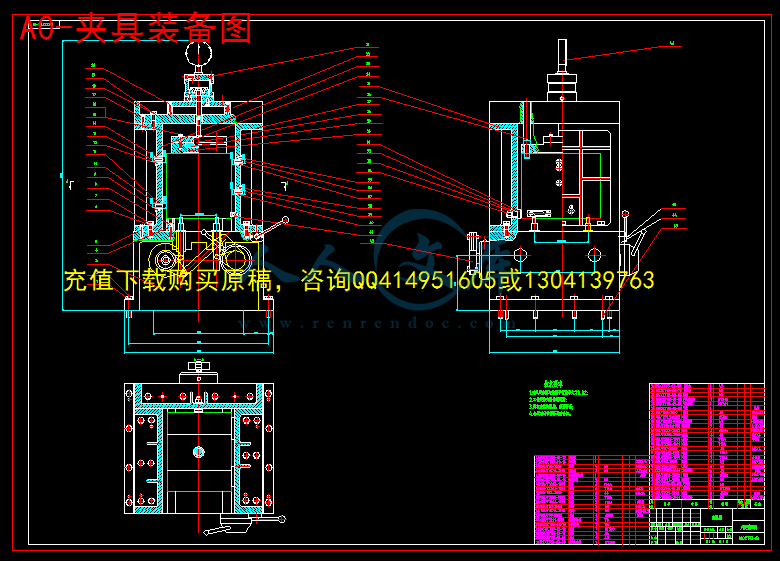
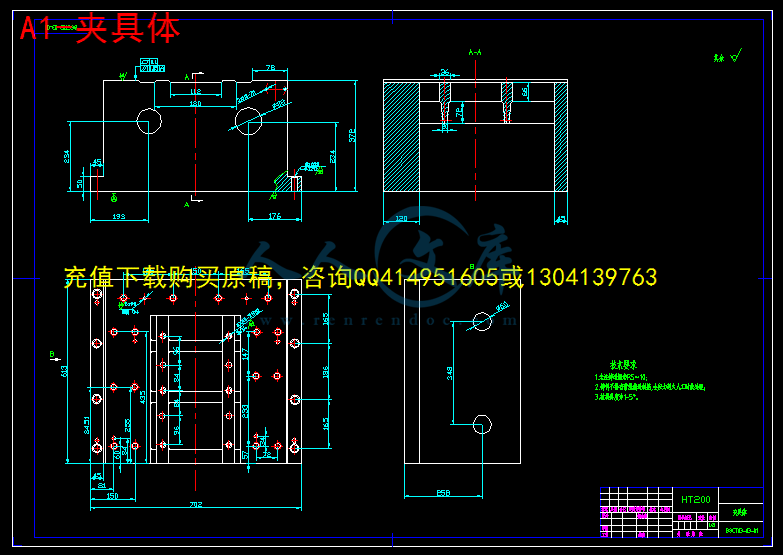
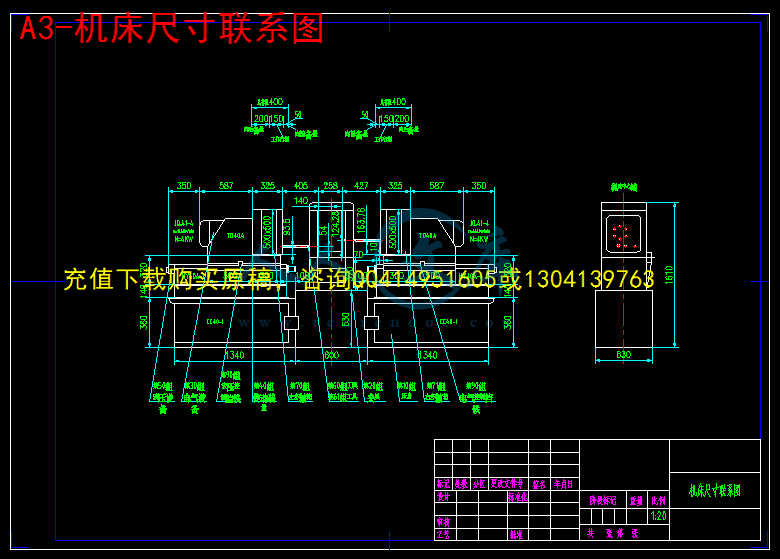
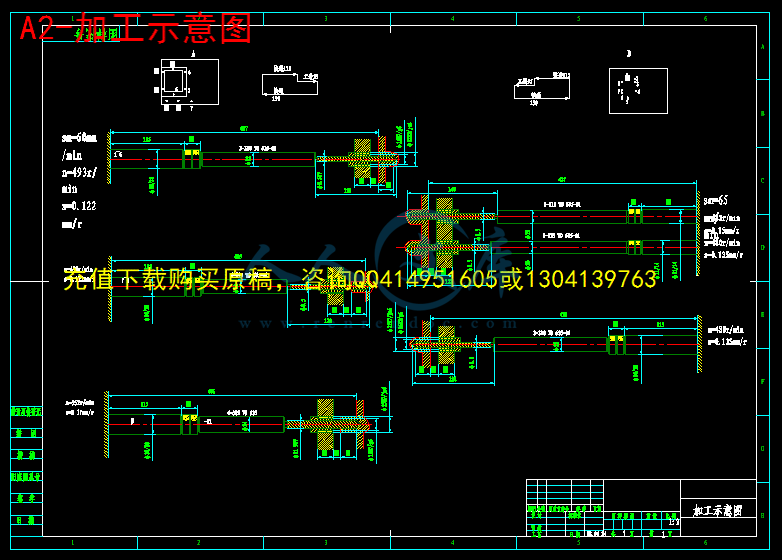
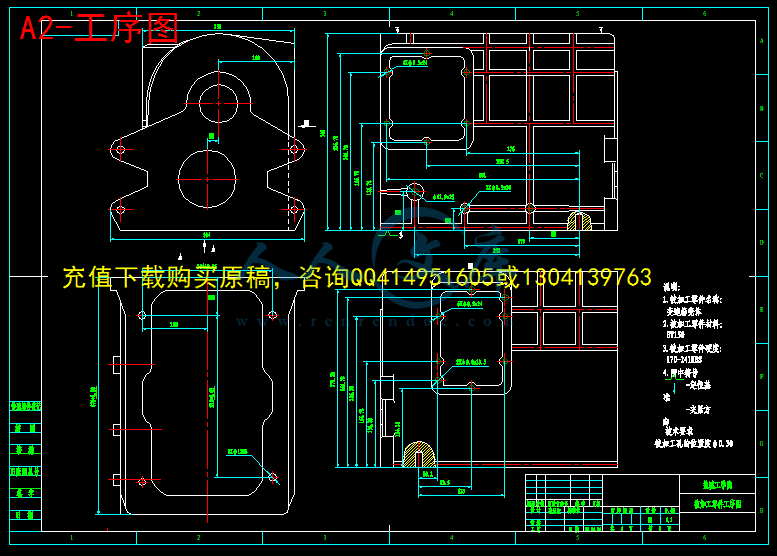
- 内容简介:
-
机床生产率计算卡 被加工零件 图号 毛胚种类 铸 件 名称 变速箱壳体 毛胚重量 21kg 材料 HT150 硬 度 170241HBS 工序名称 钻两侧面 工序号 序 号 工步名称 被加 工零 件数 加工 直径 mm 加工 长度 mm 工作 行程 mm 切削 速度 m/min 转速 r/min 每转 进给量 mm/r 每分钟 进给量 mm/min 工 时 min 机动 时间 辅助 时间 共计 1 装入工件 1 0.5 2 工件定位夹 紧 0.5 3 右动力部件 快 进 115 5000 0.023 钻 8.5 孔 8.5 24 35 15 493 0.122 60.164 0.582 钻 11.9 孔 11.9 25 35 15 352 0.17 59.84 0.585 死挡铁停留 0.02 快退 150 5000 0.03 4 左动力部件 快进 115 5000 0.023 钻 8.5 孔 8.5 24 35 15 480 0.135 64.8 0.540 钻 9.8 孔 9.8 25 35 15 422 0.15 63.3 0.553 死挡铁停留 0.02 快退 150 5000 0.03 5 松开工件 0.2 6 卸下工件 0.3 备 注 单位工时 2.158min 机床实际生产率 Q1 27.8
- 温馨提示:
1: 本站所有资源如无特殊说明,都需要本地电脑安装OFFICE2007和PDF阅读器。图纸软件为CAD,CAXA,PROE,UG,SolidWorks等.压缩文件请下载最新的WinRAR软件解压。
2: 本站的文档不包含任何第三方提供的附件图纸等,如果需要附件,请联系上传者。文件的所有权益归上传用户所有。
3.本站RAR压缩包中若带图纸,网页内容里面会有图纸预览,若没有图纸预览就没有图纸。
4. 未经权益所有人同意不得将文件中的内容挪作商业或盈利用途。
5. 人人文库网仅提供信息存储空间,仅对用户上传内容的表现方式做保护处理,对用户上传分享的文档内容本身不做任何修改或编辑,并不能对任何下载内容负责。
6. 下载文件中如有侵权或不适当内容,请与我们联系,我们立即纠正。
7. 本站不保证下载资源的准确性、安全性和完整性, 同时也不承担用户因使用这些下载资源对自己和他人造成任何形式的伤害或损失。

人人文库网所有资源均是用户自行上传分享,仅供网友学习交流,未经上传用户书面授权,请勿作他用。
 川公网安备: 51019002004831号
川公网安备: 51019002004831号